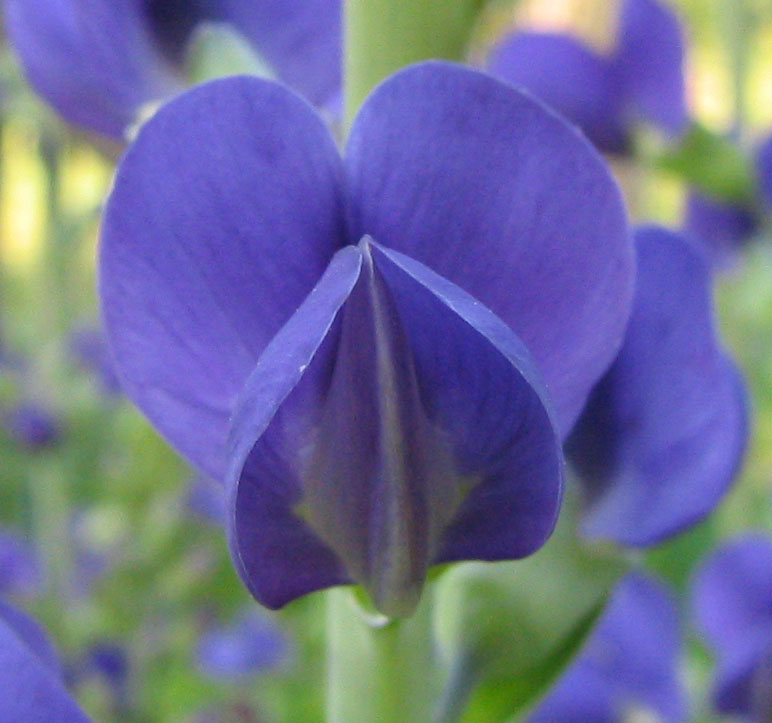Native Plant Profile: Baptisia australis is a springtime carnival of early-season color.
– Common Name: Blue wild indigo
– Scientific Name: Baptisia australis
– Plant Family: Fabaceae (Legume family)
Pronunciation: The pronunciation of Baptisia australis is buhp-TIZ-ee-uh aw-STRAY-lis.
Description: Baptisia australis is a perennial flowering plant known for its vibrant blue flowers and attractive foliage. It typically grows up to 3 to 4 feet (90 to 120 cm) tall and has a bushy habit. The flowers bloom in late spring to early summer, forming upright spikes that attract pollinators like bees and butterflies. The plant also produces seed pods that turn dark brown as they mature.



Care Instructions:
1. Sunlight: Baptisia australis thrives in full sun, although it can tolerate some light shade.
2. Soil: It prefers well-draining soil, but it is adaptable to various soil types, including sandy or clay soil. Preferred ph range 4.5-7.5
3. Watering: Once established, it is relatively drought-tolerant and requires minimal watering. Water regularly during the first growing season to help the plant establish a strong root system.
4. Pruning: Cut back the foliage to the ground in late fall or early spring before new growth emerges.
5. Fertilizer: Baptisia australis generally do not require fertilizer.
Companion Native Plants: Baptisia australis pairs well with other native prairie plants such as:
– Echinacea purpurea (Purple coneflower)
– Asclepias tuberosa (Butterfly weed)
– Monarda fistulosa (Wild bergamot)
– Penstemon tubaeflorus (White wand beardtongue)
– Pycanthemum muticum (Mountain mint)
– Echinacea pallida (Pale pink coneflower)
Pests: Baptisia australis is generally resistant to pests and diseases. However, keep an eye out for aphids and spider mites. These can be controlled with insecticidal soap or a strong blast of water.
Plant Design Options: Baptisia australis can be used in various garden design options:
– Mixed perennial borders: Its tall, vertical spikes of blue flowers provide a beautiful backdrop for other perennials.
– Prairie-style gardens: Incorporate it into a meadow-like setting with other native plants for a naturalistic look.
– Cottage gardens: Combine it with other cottage gardens favorites like roses and delphiniums for a charming display.
History: Baptisia australis is native to North America, particularly the eastern and central regions of the United States. It has a rich history of traditional medicinal uses among Native American tribes. The plant’s roots were used as a dye source for textiles, producing a blue or greenish-blue color.



Similar Species and Stand-Out Cultivars:
1. Baptisia alba: Known as white wild indigo, it features white flowers instead of blue.
2. Baptisia sphaerocarpa: Yellow wild indigo, notable for its bright yellow flowers.
3. Baptisia ‘Solar Flare’: A standout cultivar with deep red flowers and purple-tinged foliage.
4. Baptisia ‘Purple Smoke’: This cultivar showcases smoky purple flowers that fade to dusty lavender.
These similar species and cultivars offer alternative color options and can be used alongside Baptisia australis to create diverse plantings.



